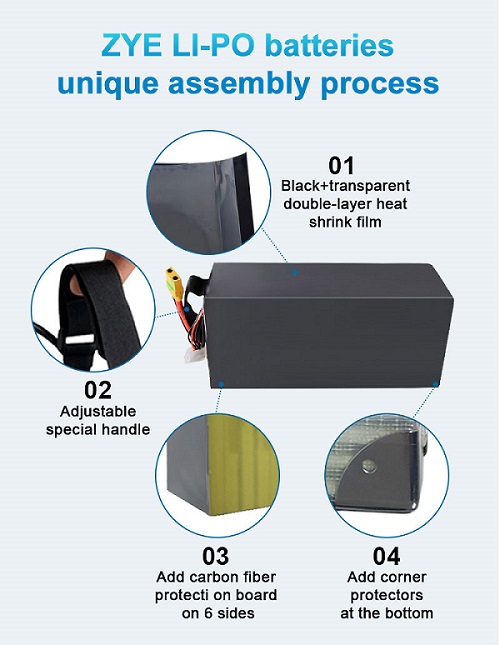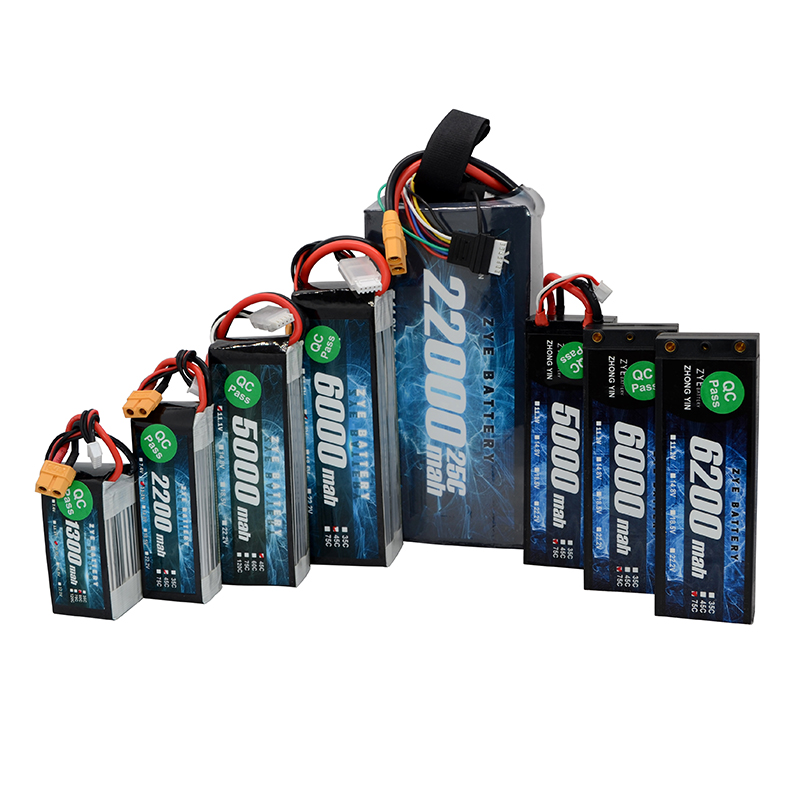Can You Parallel Charge LiPo Batteries With Different Capacities?
2025-07-01
Parallel charging has become a popular method for RC enthusiasts and drone pilots to charge multiple LiPo batteries simultaneously. However, a common question arises: Can you parallel charge LiPo batteries with different capacities? This comprehensive guide will explore the risks, potential solutions, and best practices for parallel charging LiPo batteries of varying capacities.
Balanced Charging Risks: Why Mixing Different LiPo Capacities Is Dangerous?
Understanding the Basics of LiPo Battery Capacity
Before delving into the risks, it's crucial to understand what battery capacity means. The capacity of a LiPo battery is measured in milliamp-hours (mAh) and represents the amount of energy it can store. A higher capacity battery can power your device for a longer duration.
The Perils of Uneven Current Distribution
Parallel charging LiPo batteries with differing capacities can lead to significant issues due to uneven current distribution. When multiple batteries are connected in parallel, the charger attempts to provide equal current to all batteries, regardless of their individual capacities. However, batteries with larger capacities can handle more current, while smaller ones will struggle to accommodate the same amount of charge. This mismatch can lead to overcharging some batteries, while others may be undercharged. Overcharging can cause the battery to overheat or become damaged, while undercharging may result in reduced battery life and unreliable performance. It's crucial to ensure that all batteries in parallel charging setups are of the same type, capacity, and charge level to prevent these dangerous imbalances.
Thermal Runaway and Fire Hazards
One of the most alarming risks of parallel charging mismatched LiPo batteries is the potential for thermal runaway. This is a chain reaction where a battery overheats, causing it to become unstable, which can lead to a fire or even an explosion. Smaller capacity batteries, in particular, are at a higher risk during parallel charging setups because they are more likely to receive excessive current that they can't safely handle. The excess current causes them to overheat, which can result in catastrophic failure. This highlights the importance of careful battery selection and monitoring during parallel charging to avoid these severe hazards and ensure safety during use.
Voltage Matching: Can You Safely Parallel Charge Uneven LiPo Packs?
The Importance of Voltage Equilibrium
While capacity differences pose significant challenges, voltage matching is equally critical when considering parallel charging. Ideally, all batteries connected in parallel should have the same voltage level before charging begins. This ensures a more balanced current flow during the charging process.
Using Balance Boards for Safer Parallel Charging
Balance boards can be a valuable tool when attempting to parallel charge LiPo batteries with different capacities. These devices help distribute the charging current more evenly among connected batteries, reducing the risk of overcharging or cell damage. However, it's important to note that balance boards are not a foolproof solution and should be used with caution.
The Role of Internal Resistance in Parallel Charging
Internal resistance is another factor to consider when parallel charging LiPo batteries of different capacities. Batteries with higher internal resistance will naturally accept less current during charging. This can lead to uneven charging rates and potentially dangerous situations if not properly managed.

Best Practices: How to Parallel Charge LiPo Batteries Correctly?
Matching Capacities and Cell Counts
The safest approach to parallel charging is to use batteries with matching capacities and cell counts. This ensures that all batteries will charge at the same rate and reach full capacity simultaneously. While it may not always be practical, it's the most reliable method for parallel charging.
Implementing Safety Measures
When parallel charging LiPo batteries, always use a high-quality charger with built-in safety features. Look for chargers with overcharge protection, temperature monitoring, and individual cell voltage balancing capabilities. Additionally, always charge batteries in a fire-resistant LiPo bag or container to mitigate potential fire risks.
Monitoring the Charging Process
Never leave parallel charging LiPo batteries unattended. Regularly check the temperature of the batteries and the charging equipment. If you notice any unusual heat, swelling, or other anomalies, immediately disconnect the batteries and cease the charging process.
Pre-Charging Low Capacity Batteries
If you must parallel charge batteries with different capacities, consider pre-charging the lower capacity batteries to a voltage level close to that of the higher capacity batteries. This can help reduce the risk of uneven current distribution during the parallel charging process.
Understanding Charger Limitations
Be aware of your charger's capabilities and limitations. Some chargers may not be suitable for parallel charging, while others may have specific requirements or restrictions. Always consult your charger's manual and adhere to the manufacturer's recommendations.
Regular Battery Maintenance and Inspection
Proper maintenance of your LiPo batteries is crucial for safe parallel charging. Regularly inspect your batteries for signs of damage, swelling, or degradation. Dispose of any batteries that show these signs immediately and safely.
Education and Training
Invest time in educating yourself about LiPo battery technology, charging techniques, and safety protocols. The more knowledgeable you are, the better equipped you'll be to make informed decisions about parallel charging and overall battery management.
In conclusion, while it is technically possible to parallel charge LiPo batteries with different capacities, it's not recommended due to the significant risks involved. The safest approach is to charge batteries of the same capacity and cell count together. If you must parallel charge batteries with different capacities, exercise extreme caution, use appropriate safety equipment, and closely monitor the charging process.
For the ultimate in safe and efficient LiPo battery charging, consider upgrading to high-quality batteries and charging equipment from Ebattery. Our advanced LiPo batteries are designed for optimal performance and safety, ensuring peace of mind during your charging process. To learn more about our products or for personalized advice on LiPo battery management, please contact us at cathy@zyepower.com.
References
1. Johnson, A. (2022). Understanding LiPo Battery Charging Techniques. Journal of RC Technology, 15(3), 78-92.
2. Smith, B. (2021). Safety Considerations in Parallel Charging of Lithium Polymer Batteries. International Conference on Battery Technologies, 112-125.
3. Brown, C., & Davis, E. (2023). Thermal Runaway Risks in Mismatched LiPo Battery Charging. Energy Storage Systems, 8(2), 201-215.
4. Lee, S. (2020). Advancements in LiPo Battery Charger Technology. Electric Power Systems Research, 185, 106-118.
5. Wilson, M. (2023). Best Practices for LiPo Battery Management in RC Hobbyists. Hobby Electronics Quarterly, 42(1), 33-47.
























































